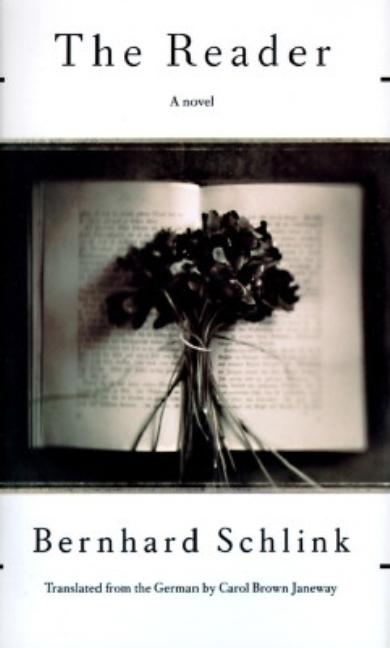

The German version of this page is available at. Don’t be annoyed by our advertisements, please keep in mind that running this site without advertisements would not be possible. We are not associated with Bernhard Schlink or the publishing house. You can be sure one of us or another visitor will help you.
THE READER BY BERNHARD SCHLINK PDF FREE
If you have any questions regarding the content of The Reader by Bernhard Schlink, its characters, or something about the analysis of this novel, feel free to put a comment under the corresponding page. You can easily use it to get in touch with the book, repeat different things during reading, or prepare for an exam. The page should give you an overview of the whole plot and the story, The Reader, with Hanna and Michael Berg. Book cover The Reader by Bernhard Schlink Maybe this is the biggest resource about Schlink’s, The Reader, on the web.

We created summaries on every single chapter, wrote characterizations, built presentations, and collected information on the Holocaust topic during the weeks of our project work. This website about the novel, The Reader, written by Bernhard Schlink, was published during a project work in a German class. Attempts after the immediate postwar period to elevate German suffering from the private and familial to the level of national and official commemoration, by way of, say, the Bund der Vetriebenen (Association of Expellees), were deemed by second-generation Germans in the 1960s to be revisionist attempts to subsume Holocaust memory by recourse to competing claims of victimization.Everything you need to know about The Reader by Bernhard Schlink Memories of German suffering, according to Assmann, have been the stuff of private, familial, communicative memory, and have not been recognized at an official commemorative level, which is the preserve of a hegemonic Holocaust memory.

In 2006 Aleida Assmann perceived the persistence of a binary opposition in German cultural memory, in which Germans were remembered as either “victims” or “perpetrators,” but never both. This intervention needs to be understood in relation to the binary thinking that governs the remembrance and construction of Germany's victims and perpetrators. In this chapter, however, I argue that Schlink's novel actually attempts to intervene critically in these proclivities of German cultural memory. Such an appropriation of victim status is part of a wider discourse of German suffering, prevalent in the 1990s and 2000s, which has often sought to elide the. Also, distorted cognitions, feelings of detachment, and persistent inability to experience positive emotions are described, among other symptoms, within these criteria.īERNHARD SCHLINK'S 1995 NOVEL Der Vorleser (The Reader, 1996) has attracted a critical consensus that deems it to have reconfigured the perpetrator generation as victims of Nazism and the second generation as victims of Nazism's legacy. Also, experiencing repeated or extreme exposure to aversive details of the traumatic event can be criteria for the diagnosis of PTSD: (2) Presence of intrusion symptoms associated with the traumatic event (memories, dreams, dissociative reactions, distress, and physiological reactions) (3) Persistent avoidance of stimuli associated with the traumatic event (4) Negative alterations in cognition and mood, which include the inability to remember an important aspect(s) of the traumatic event(s) often due to dissociative amnesia.
THE READER BY BERNHARD SCHLINK PDF MANUAL
In Diagnostic and Statistical Manual of Mental Disorders (DSM)-5 (2013), PTSD, as part of trauma and stressor-related disorders, is defined by diagnostic criteria which include: (1) Exposure to actual or threatened death which, in the new version of DSM-5, compared to DSM 4, includes not only directly experiencing or witnessing the traumatic event but also learning that the traumatic event occurred to a close friend or family member. In everyday life, we are often exposed to traumatic experiences which can lead to diagnosis of posttraumatic stress disorder (PTSD).


 0 kommentar(er)
0 kommentar(er)
